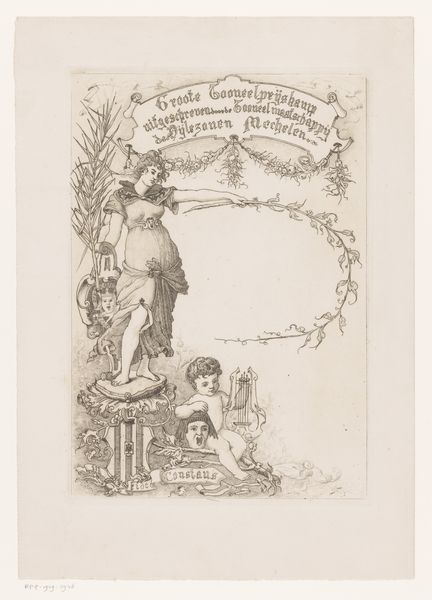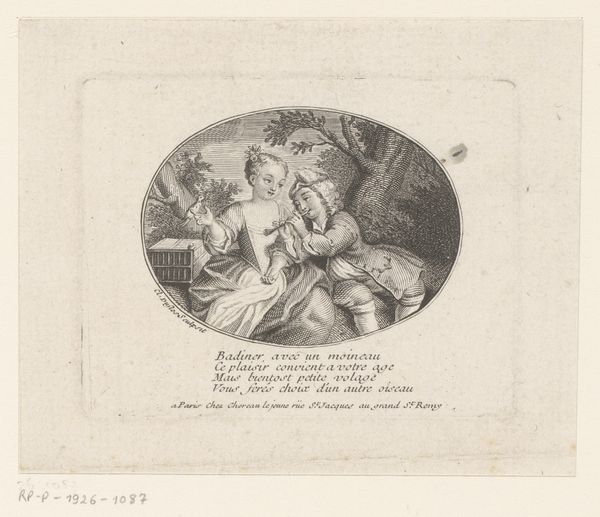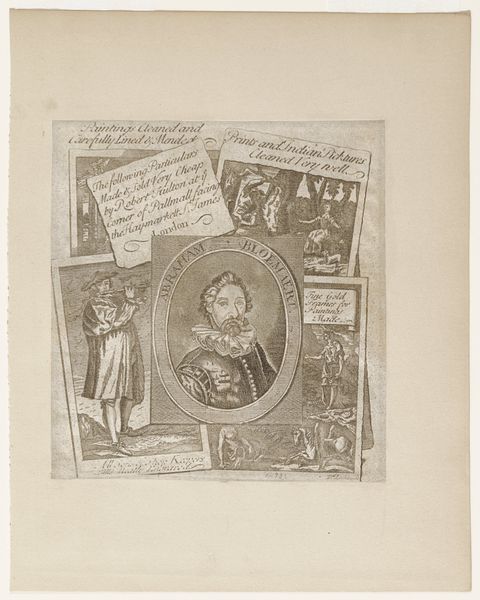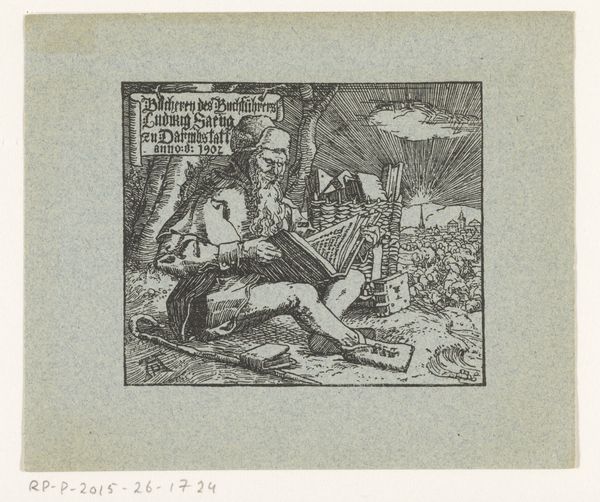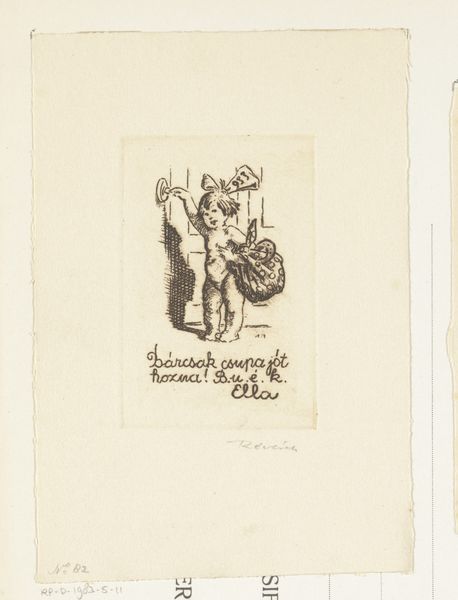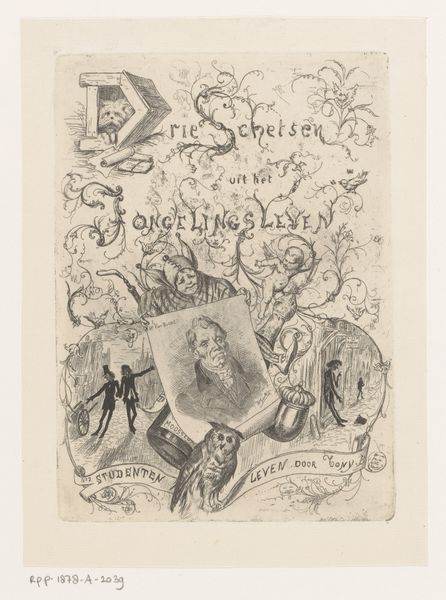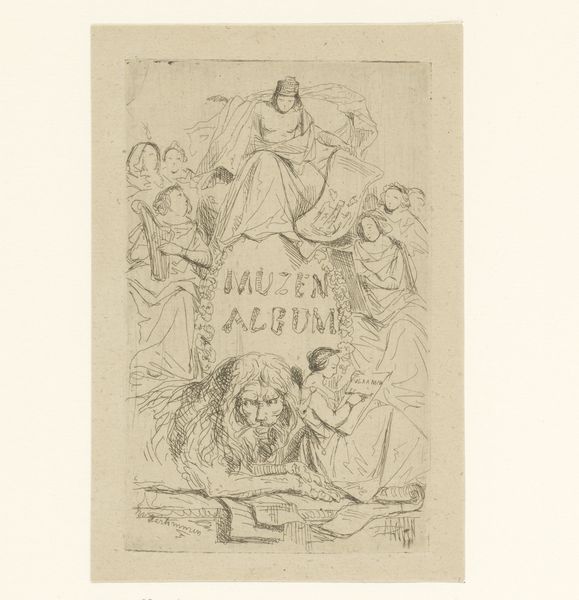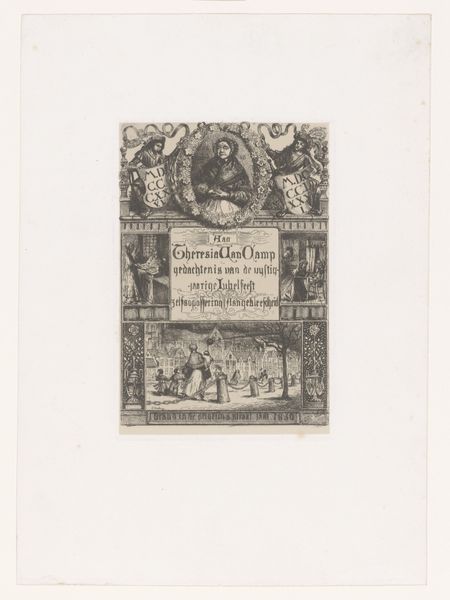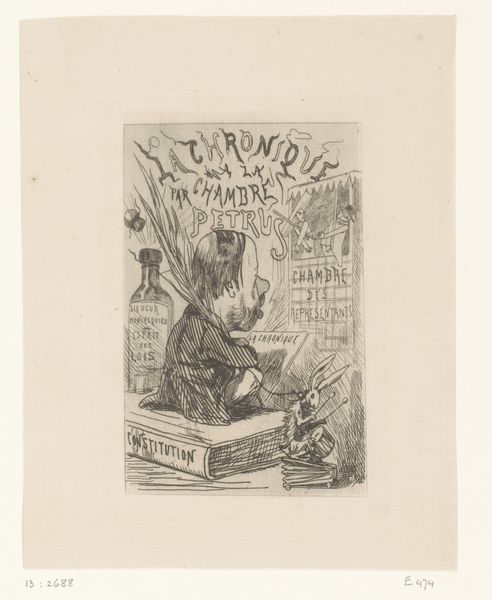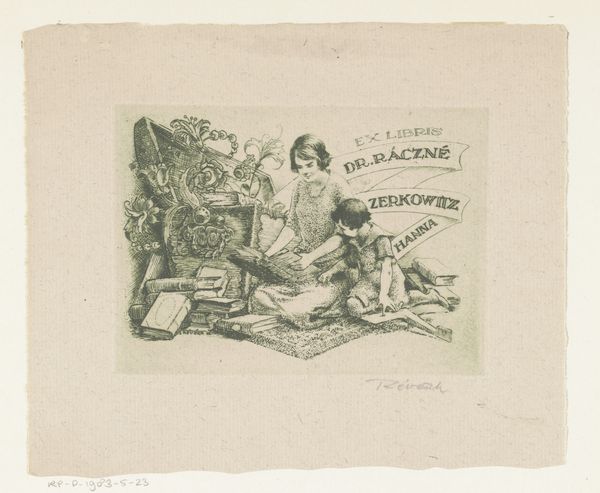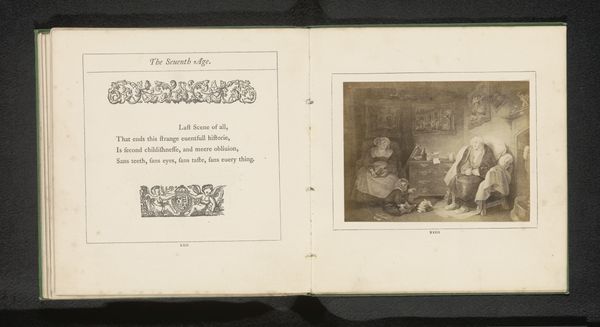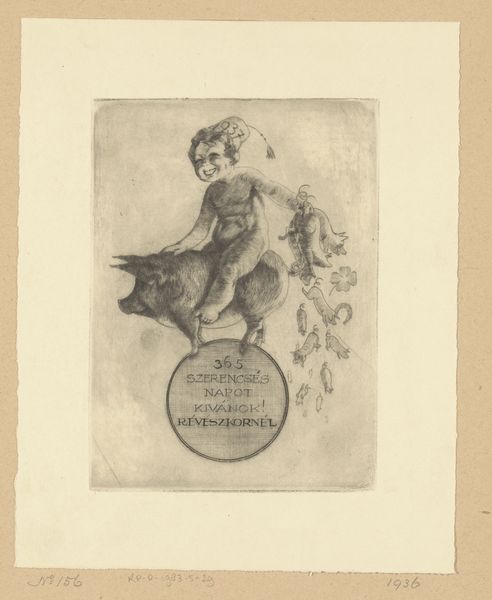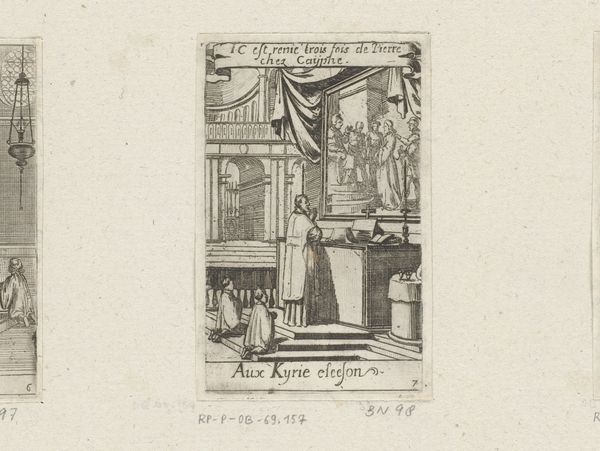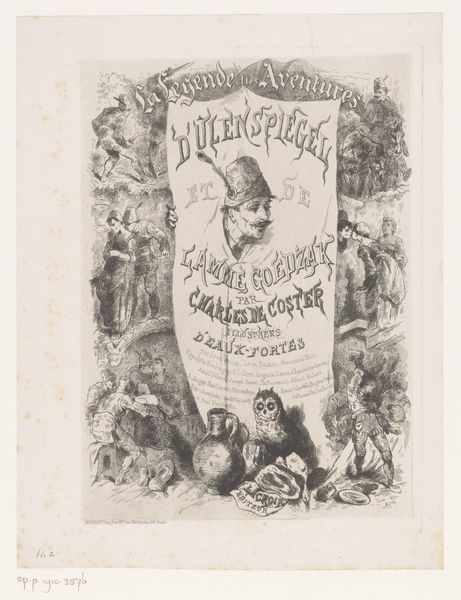
Visitekaartje van E. Pasquier en M. Carlier, uitgeverij en prenthandel te Parijs c. 1900 - 1925
0:00
0:00
drawing, graphic-art, print, paper, engraving
#
portrait
#
drawing
#
graphic-art
#
art-nouveau
# print
#
figuration
#
paper
#
cityscape
#
engraving
Dimensions: height 80 mm, width 124 mm
Copyright: Rijks Museum: Open Domain
Editor: So, we're looking at a business card here, "Visitekaartje van E. Pasquier en M. Carlier," dating from around 1900 to 1925. It's a print, probably engraving, by Louis Icart. I'm struck by how it’s trying to straddle two eras with the dress of the women depicted; there’s a foot in the past, foot in the present feel to this print. What are your thoughts? Curator: Well, let's think about what a business card *does*. It’s meant to create a specific impression, to brand the company, right? And who are Pasquier and Carlier? They’re publishers and print dealers, trading on *taste*. The presence of what it terms the '18th Century English style' positions their business as being allied to the aristocratic. But note that in claiming the "18th Century" they avoid claiming a particular aesthetic position that could close the market to them: the late 19th Century was, above all, historicist in art. Do you see a similar kind of generic reference in the mention of 'Haute Mode'? Editor: Yes, it also seems less like it is selling the "product" (i.e., art prints and books) as much as it is selling "art" as an idea. Also the building implied to be '29 Rue de Trevise Paris" seems as much about a generic *idea* of Paris, just like you said before about art more generally. Curator: Exactly! What do you think that telephone number tells us about the aspirations of the company? Is there something contradictory in its inclusion here? Editor: It reveals the transition into modernity, it reveals also something about accessibility in art for "the people" using this telephone... Curator: I agree; it seems as though Pasquier and Carlier have to address the new market as well as retaining older ideals... very cleverly done. Editor: Fascinating. I hadn’t considered the card as an explicit engagement in the socio-economics of the time, that historical balancing act.
Comments
No comments
Be the first to comment and join the conversation on the ultimate creative platform.
